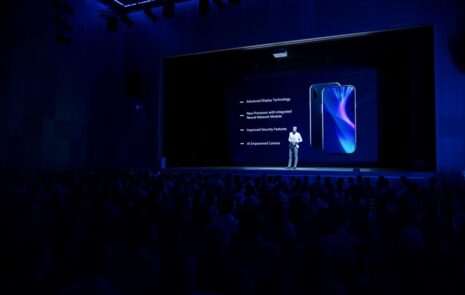
Why your company needs media training
A reporter calls asking for a quote for a story about your industry. If you don’t respond by the reporter’s deadline, your competitors will be quoted. And your company will be left out of the article completely.
Your PR department has been pitching a story about your company’s latest solution. A reporter from the most important trade publication for your industry responds and wants an interview.
What if your CEO and other top executives aren’t trained to speak to the media? Or what if the only two people from your company authorized to speak to the media aren’t able to respond by the reporter’s deadline?
Missing Media Coverage Opportunities
You risk missing media coverage. Media coverage that can boost awareness and preference for your brand. Earned media — the articles and stories a company did not pay for — is still the most trusted form of media.

With lean marketing and communications budgets and executives short on time, many organizations hesitate to spend time and money on media training. But is saving money now worth taking the risk later?
In addition to missing out on opportunities like the ones listed above, what if your company has a crisis, and no one is trained on how to respond?
With a small investment and a few hours’ time (depending on how many people you choose to train), your company can be prepared for any situation that involves news media.
The right time to train is now. Waiting to conduct media training until you are about to launch a new product or have to respond to a crisis greatly decreases your chances of getting your company’s story heard.
What is media training?
Media training is exactly that: training employees of your company to speak to the media. A media training session can vary in time, length, and a number of attendees depending on your company’s needs.
For example, many of my startup clients like to train their entire leadership team, so they are prepared for media inquiries at any time.
Some of my larger clients prefer to do individual, deep-dive sessions with one or two executives at a time. And many times I’m called on to do a single media training session to prep for a specific product launch, earnings announcement, or TV appearance.

Most companies do not have media training experts in-house, so they bring in a qualified trainer. When seeking a media trainer, look for someone who has years of experience helping companies get their stories heard.
They should know how best to work with media and what techniques and coaching tools will help your trainees get your company’s story heard in the media. Most media trainers are public relations professionals or former news media reporters.
How to prepare for media training
First, you need to determine the people you want to train. Even for smaller companies, I recommend training a minimum of 3 people. This number improves the odds that at least one person who’s trained can be available to speak to a reporter on short notice.
Larger companies often need to train several people. In addition to top executives, many times reporters want to speak with specific subject matter experts who know the technical ins and outs of your company’s solutions.
Keep in mind that when selecting media training candidates, you need to consider more than just their titles. In fact, the most important criteria for selecting media training candidates is this: Will this person be a good spokesperson for your company?
What makes a good spokesperson?
I recommend selecting your media training candidates using the following criteria:
- Select a good mix of C-level executives and subject matter experts so you are prepared for all levels of media inquiries.
- While the title is not the most important criteria, reporters want to interview someone who’s knowledgeable about the topic. Most reporters prefer speaking to department leads or subject matter experts rather than salespeople.
- Are the candidates easy to understand? Candidates who speak too quickly or are difficult to understand because of speech patterns or language barriers may need extra time and attention.
- Are the candidates friendly and able to keep calm under pressure? This is perhaps the most important criteria for a good spokesperson. As my good friend and mentor Tripp Frohlichstein always said, “Never argue with someone who buys their ink by the barrel or server by the gigabyte.” Make sure the candidates you select can remain calm and friendly to reporters in any situation, even when they field tough questions or accusations from reporters.
- Do the candidates understand the importance of their role as a spokesperson? Select candidates that understand how much a good news story can do for your company, so they are willing to take the time to prepare for and participate in media interviews. Your media trainer should be able to provide facts to support the importance of good news coverage that you can use with your trainees.
What to expect from media training
Once you’ve selected your candidates, work with your media trainer on the date and length of the session. While media training sessions vary depending on the expert you choose, most sessions contain a mix of information on how to work with reporters, do’s and don’ts, practice interviews, and interview coaching and critique.
Choose a trainer who video records practice interviews so your trainees can review them later, to see how they’re coming across.
Also, choose a media trainer who will customize the training specifically to the needs of your company. For example, I always thoroughly research all of my clients. I make sure I understand their industry, their products, and their competition, so I can ask the right questions during practice interviews.
If you have videos of any of your trainees speaking, supply them to your media trainer. The media trainer will see which specific coaching needs each trainee has.
Work with your media trainer in advance of the session to discuss specific topics to cover in both the training and the practice interviews.
In my media training sessions, I always spend time coaching trainees to create a short, one-page Message Map. A message map gives you a clear, concise message, so you immediately see what to say and say what you mean. It helps your spokesperson prepare for and stay on track during a media interview.
Make the most of your media training.
You’ve trained several spokespeople. Now what?
If you have news to pitch to the media, make sure your spokespeople are trained on the messaging for that specific announcement. When you do secure a media interview, have the selected spokesperson do a practice interview with your media trainer.
Your media trainer should offer follow-up support. A practice session helps ensure your spokesperson is confident and on message. This increases your chances of getting your company’s story heard.
Practice

Even if you don’t have any upcoming news announcements or media interviews, I recommend reviewing and refreshing your Message Map quarterly. You can add new customer examples. This includes product details and ensures the message is fresh in everyone’s mind.
I also recommend putting your spokespeople through periodic refresher sessions to keep their skills sharp. Also, train additional spokespeople as needed. Such as new hires and people promoted to positions where they may need to speak to the media.
Objective news coverage in respected publications is still the most trusted information source, and as a result, it can boost awareness and preference for your brand. Your sales and marketing teams can use good news coverage with prospects and clients.
Investing in media training for your company’s spokespeople ensures you have a clear, concise, consistent story. With a Message Map, your spokespeople can hook the audience in 7 seconds. Which increases the chances of getting your company’s story heard.
For more tips on how to deliver on-message communications, subscribe to our blog.
Related Posts
Presenters: Stop burying the lead
As presenters, why do we so often bury the lead? In school, many of us were taught to write using this formula: introduction, body,...
Presenting at a hybrid event? Read these tips.
What is a hybrid event? The hybrid event is another way organizations have responded to life during a pandemic. Some people are now comfortable...
Customers Care Only When Your Message Is Relevant, Resonant
No one can win customers by spouting messages people don’t care about. Only a relevant, resonant message can break through to customers. As adman...
Reduce anxiety before your presentation
Do you experience anxiety before giving a presentation? Giving a presentation is a great way to get your organization’s story heard. Yet many clients...





